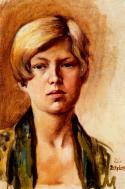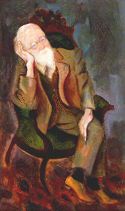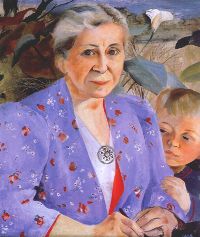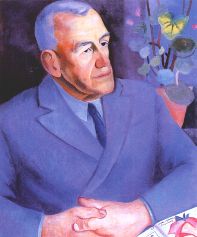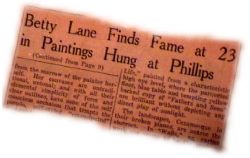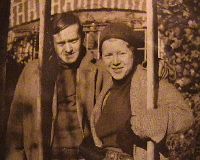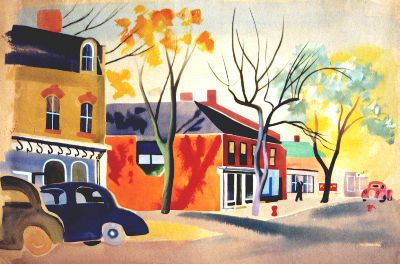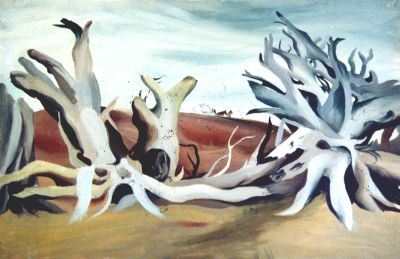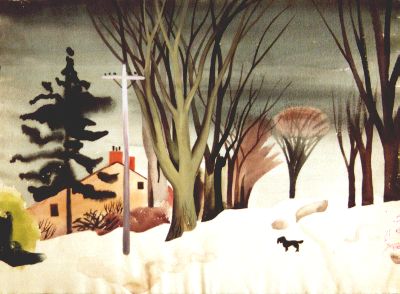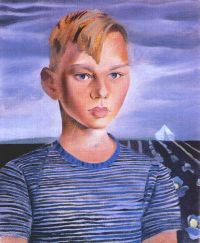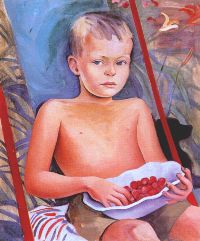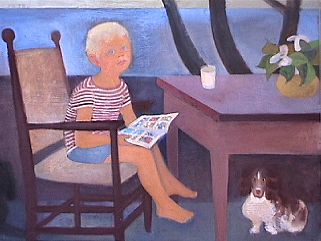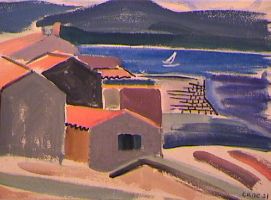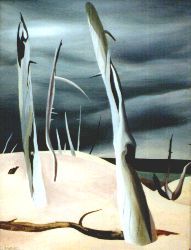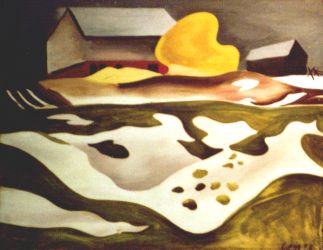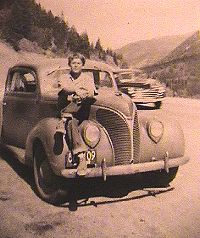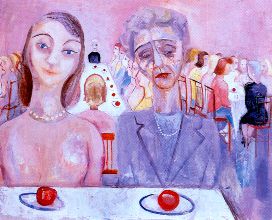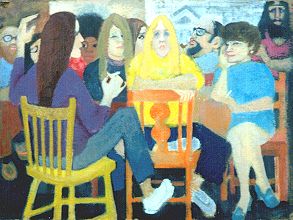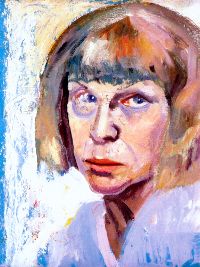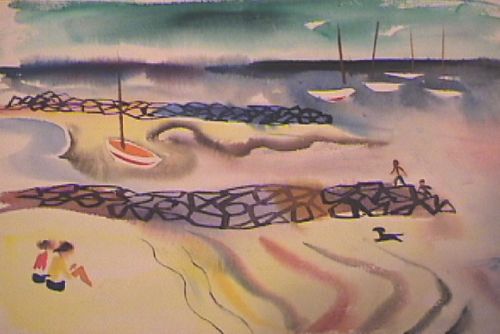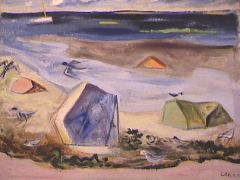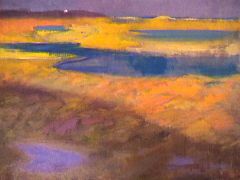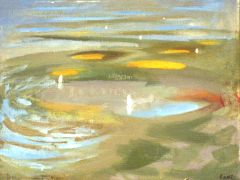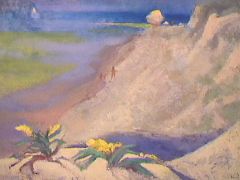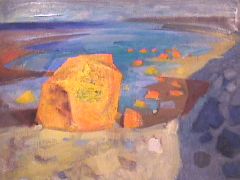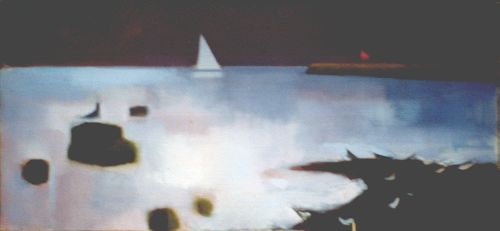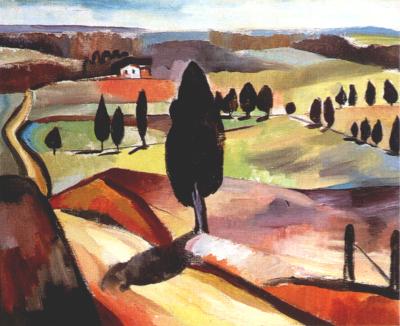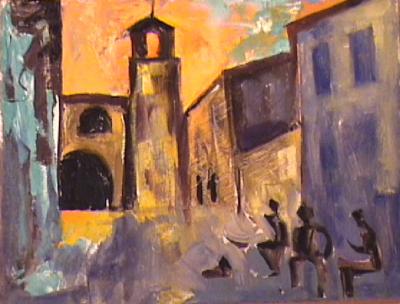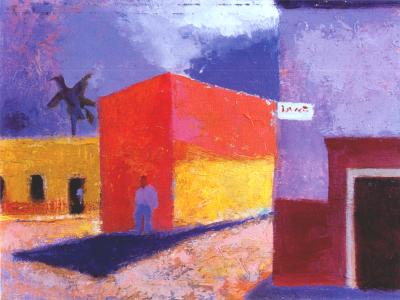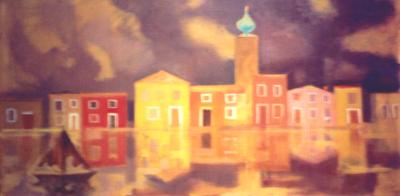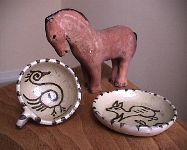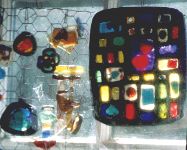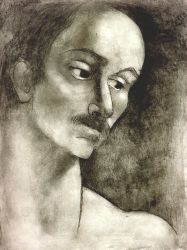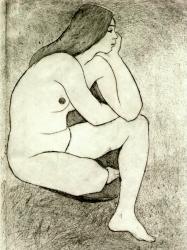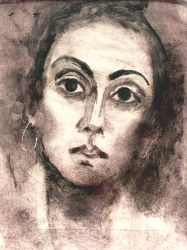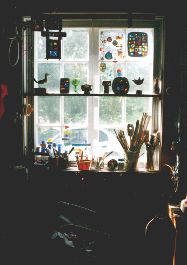|
(1907-1996) |
|
|
|
|||||||||||||||||||||||||||
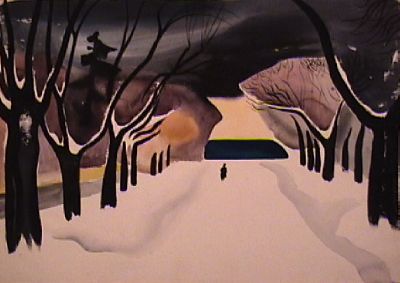 |
|||||||||||||||||||||||||||
|
Betty Lane was born in 1907, in Washington D.C., the daughter of a Marine Corps officer and one of six children. Her father was often stationed abroad as a military governor of America's new territories, notably the Philippines and Santo Domingo in the West Indies. The youngest daughter, pretty and outgoing, Betty was certainly indulged and got plenty of attention. She was close to both her parents but her mother especially seems to have fostered her ambition and independence. Betty, who also played the violin, was considered something of a phenomenon. But she was not a good student, and except for the actual doing of music and art, she got very little classroom education. She was painfully aware of this all her life. |
|||||||||||||||||||||||||||
|
|||||||||||||||||||||||||||
|
|||||||||||||||||||||||||||
|
|||||||||||||||||||||||||||
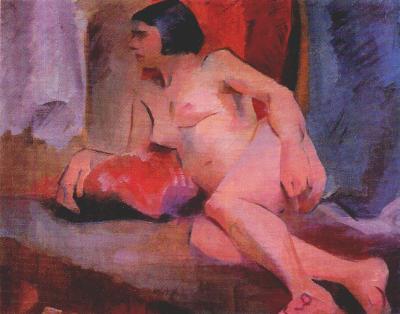 |
|||||||||||||||||||||||||||
|
|||||||||||||||||||||||||||
|
|||||||||||||||||||||||||||
|
Paris in the twenties was all that Betty had expected, and it had one expected result. She drank and stayed up all night at parties. She traveled a lot, sometimes with boyfriends. It was all pretty innocent -- she reported in detailed letters to her mother -- but it drew rebukes and eventually she felt obliged to return home. She returned to Falls Church, Virginia in time for Christmas 1929. She felt stifled there and more restless than ever. Her family was proud but critical and, as she now thought, terribly provincial. She saw little of her old friends and longed for her European companions. One of them was my father, Gerald Noxon, a Canadian living in Europe who urged her to return there where such exciting things were happening. "Picasso," he wrote, "is streets ahead." Betty yearned to go back to Paris or at least be on her own. Her mother was her champion and provided an out, financing a small apartment in Washington which became Betty's studio. And then Betty discovered the Phillips Memorial Gallery in Washington which became her haven and inspiration. Mr. and Mrs. Phillips themselves took an interest in her. Her diary on May 14th, 1930 reads...
Even in this moment of triumph she was skeptical and showed the self-critical streak that was so characteristic of her.
Phillips, the millionaire art patron, did buy her work and gave her a show in April of the following year. In her early 20s she had already studied in Paris and now was recognized as a serious talent. The experience of the show was uncomfortable for her but she couldn't have found it quite as tedious as she reported in her diary... |
|||||||||||||||||||||||||||
|
|||||||||||||||||||||||||||
|
She was more than ever eager to get back to Europe and Phillips made it possible, buying four paintings at one hundred dollars each. After she had left Washington an even more flattering event took place at the Phillips Gallery. Matisse took notice of one of her paintings, The Walls. One of the museum staff wrote what happened. "... you know that Matisse discovered Miss Lane's picture and demanded to know who did it? And when I described her to him he grunted many "Oui, Oui's" and told us it pleased him very much: "Cela me plait beaucoup." In other words "C'est agreeable." |
|||||||||||||||||||||||||||
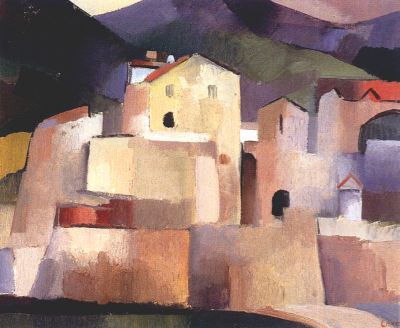 |
|||||||||||||||||||||||||||
|
Betty may have questioned Phillip's judgment - but Matisse! She could not help but be overjoyed. In all, her return to Washington, however reluctant, had turned out very well. |
|||||||||||||||||||||||||||
|
|||||||||||||||||||||||||||
|
There followed a tumultuous, confusing and sometimes unhappy period when my parents stayed on in Europe and England. They had various jobs and sporadic allowances from their families, which were relatively well off but were now feeling the pinch of the depression. Proper bohemians, Betty and Gerald were often broke but still managed to travel a lot and live well when money came their way. Betty did not paint very much. Later she could not explain entirely why. For one thing, she was a wife and she took that role seriously. The notion of working as well was hardly respectable where Betty came from. And too, despite her early success, she had little self-confidence. She felt (and was) patronized by many of the people she met in Europe. Gerald was a Cambridge graduate and they were in glittering intellectual company - the Paris art world and the beginnings of the documentary film movement in England. It was inspiring and fascinating for Betty but often demoralizing as well. And their marriage was rocky from the start. Betty wrestled with conflicting emotions. She yearned to be independent. But when alone she was unhappy and depressed. My birth in 1936 was a traumatic experience. It came at a bad time in her relationship with my father and, during her pregnancy, she felt none of the maternal warmth the idealized notions of motherhood in those days had led her to expect. She would later joke that it was lucky I turned out well because she wouldn't have ever tried that again. |
|||||||||||||||||||||||||||
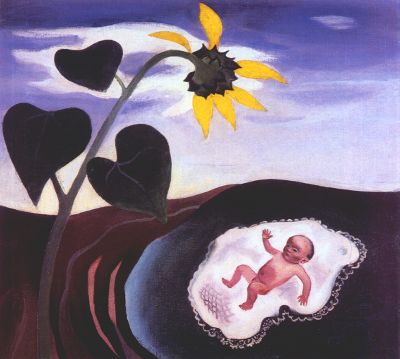 |
|||||||||||||||||||||||||||
|
Eventually, things settled down. My father found a good job in London and they began to get ahead. Then their whole world came apart with the beginning of World War II. While little changed immediately in England, there was a sense of impending disaster when Hitler defeated France in just a few months. After much uncertainty, separations and anxiety our family was able to get to Canada where my father wrote for films and radio. Still, shaky finances and general uncertainty kept us moving. During the war we lived in three different small towns in Ontario. Betty was by now determined to return to the U.S. as soon as she could and resume her painting career there. Between the frequent moves, caring for a child and working when she could, it seems amazing she found any time at all for painting. But in this period she did a great deal of memorable work and hit her stride as a painter. Rural Canada, unspoiled not to say raw in those days, fascinated her. |
|||||||||||||||||||||||||||
|
|||||||||||||||||||||||||||
|
She also did portraits of family and friends in a style that is both arresting and revealing. One of her subjects was Gerald's nephew, Court Noxon, then a teenager, who remained - with his wife Pam - close friends of Betty's and collectors of her works. Of Court's portrait, painted in 1942, Betty wrote… |
|||||||||||||||||||||||||||
|
|||||||||||||||||||||||||||
|
Another of her subjects was me - between 1940 and 1945 she must have done at least a dozen oils. Some were full portraits, in others I am just a small figure - in one I am running home from school in a gathering storm under bleak skies and great ominous elm trees. Looking back, it seems like an allegory of all our lives then. |
|||||||||||||||||||||||||||
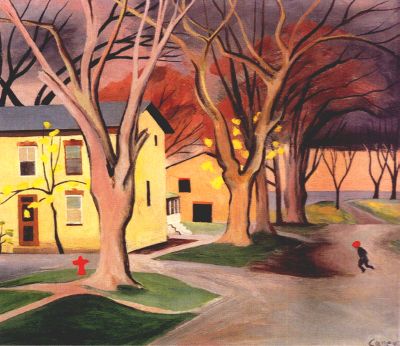 |
|||||||||||||||||||||||||||
|
For me, modeling for portraits was a form of torture and I posed only in response to threats or because of bribes. It isn't surprising that my expression is usually serious if not downright grim. I was plotting my escape… |
|||||||||||||||||||||||||||
|
|||||||||||||||||||||||||||
|
Beyond her studies in Paris and occasional classes later, Betty was never again a student-artist. In fact she clearly recalled the moment when, still in her twenties, she decided to go her own way. |
|||||||||||||||||||||||||||
|
|||||||||||||||||||||||||||
|
Others are better able to point out what influenced Betty's work, which continued to evolve throughout her lifetime. She knew many artists, and admired some, but I never knew her to paint like them. She paid a price for this independence and freedom. By the end of World War II, her early success was fading.
|
|||||||||||||||||||||||||||
|
|||||||||||||||||||||||||||
|
With the New York school on the rise and painters like Jackson Pollack being celebrated, Betty was out of fashion and she would remain so, more or less, for the rest of her life. She took it harder than she would let on, but it would not stop her painting. In 1946 my family finally came to the U.S., buying a fine old house on Lower Road in Brewster. Five years later, Betty and Gerald's marriage came to an end. (By this time my father had begun a long academic career, founding the Boston University Film School where he remained for more than 30 years. He married Olga Skerston in 1951 and lived with her in Dennisport from his retirement until his death in 1991.) After she and my father separated, Betty wanted to get on with her life but in those days the only "no fault" divorce to be had was in the state of Nevada where one party or the other had to live for 6 weeks to establish residence. This seemed out of the question as we were flat broke and Nevada seemed very foreign and far away. |
|||||||||||||||||||||||||||
|
|||||||||||||||||||||||||||
|
At first, it didn't seem that we could possibly make it. Car repairs ate our cash almost entirely before we even got to Reno. We trudged around that bizarre city being turned away, sometimes quite unkindly, everywhere we applied for work. It was in those days that I first began to appreciate my mother. She just set her jaw and got on with it. And at the end of every day she would rally our sagging spirits by talking it all over with great humor and detachment. And in the end our luck did turn and we not only survived but prospered in the most amazing way. She was hired as a chambermaid at a Lake Tahoe resort where she became so indispensable that they gladly kept me on as a golf caddie. We returned East at the end of the summer tanned and strong, worldly and rich. Betty had her divorce and would not marry again. She once wrote with that bluntness that was meant to be humorous (or not, often you weren't quite sure), "I had liked being a wife, running a house, cooking, making it happy. But I was jealous of my time and energy and no man available seemed worth it." It was not quite that simple of course. There were suitors, and the independence she sought was not always an unmixed joy. If it hadn't been for painting I think she would not have been so contented to stay alone, and her life might have taken quite a different course. Betty was once quoted by a newspaper as saying, "I don't do what other people do." It was not a bold statement of unconventionality but a way of explaining how she found time to do so much work. It had taken her awhile to set her priorities, but once she did she lived by them. From her divorce until her retirement, Betty was a teacher. This was not a choice. It was simply the most bearable way she could find to make a living, and it had many benefits. For one, it made her a student again. She remembered…
She deeply enjoyed this self-education and it seems to me it broadened the scope of her painting. And too, having to grapple with her students I think accounts for much of the variety of her later work. |
|||||||||||||||||||||||||||
|
|||||||||||||||||||||||||||
|
|||||||||||||||||||||||||||
|
For the rest of her life Cape Cod was Betty's happy hunting ground. The beaches on Cape Cod Bay near her home in Brewster fascinated her. When the tide is out the water recedes a mile or more revealing vast sand and mud flats dotted with occasional large rocks, populated by screaming sea gulls and visited by walkers with their scampering children and delighted dogs. The beach presented an ever-changing spectacle and Betty painted it for decades in many moods and styles. |
|||||||||||||||||||||||||||
|
|||||||||||||||||||||||||||
|
By any measure Betty's life on the Cape was her happiest period, but she hardly settled down. She went to Europe many times over the next few decades and often to Mexico. She was a fearless traveler and thought nothing of doing the Greek Islands alone on a shoestring, sleeping overnight on the decks of inter-island steamers. She toured the Soviet Union when that was still unusual and daring, and crossed Australia by train, an expedition which even she had to admit after the fact was extremely tedious. As she grew older she kept insisting that each trip would be her last until finally she sent us a post card written on the bus down from Boston which read "I think I'll stay home now," which she finally did when she was 81. |
|||||||||||||||||||||||||||
|
|||||||||||||||||||||||||||
|
Until her last few years Betty kept painting and showing her work. She never said much about it but, looking back on her records, I'm amazed at how much art she sold. She was never comfortable with these transactions and I always felt she was in a no-win situation. The only thing she hated more than taking money from her friends was taking it from strangers. For most of her life she thought that $100 was the proper price for a painting and explanations of inflation didn't impress her. For portraits, she would charge more - maybe $150 - but for that she would often do a second one at no charge if the first didn't suit the client. Three dealers, Mildred Bredemeier in Buffalo and Nieta Cole and Ethel Putterman on the Cape, were Godsends to Betty. I remember with great amusement Ethel's raids on Betty's basement studio. She would, with perfect nonchalance, wade into the racks of recent work blandly ignoring Betty's protests and attempts at diversion. She would then set a stack of her selections aside near the door. "We'll talk about it." she would say and then visit awhile upstairs. At a strategic moment, when Betty was on the phone or feeding the chickadees, Ethel was gone in a flash, and the deal was done. Later, Betty would say nothing when Ethel called about a sale or a check came in the mail, but I could tell she was deeply pleased. As for New York and all it represented, Betty took one last stab at it in the 1950s, quickly decided she didn't belong, and didn't try again. But the art went on, happily and incessantly. To teach her students, Betty had learned a multitude of crafts and techniques - silkscreen, block printing, pottery and making jewelry of ceramics and melted glass. She loved to experiment. Opening her little kiln after a firing she was sometimes so enchanted that I am reminded of what she first experienced in third grade - art continued to be a miracle for her. |
|||||||||||||||||||||||||||
|
|||||||||||||||||||||||||||
|
|||||||||||||||||||||||||||
|
Perhaps one can never really know one's parents. They are always distorted for better or worse. But reading Betty's voluminous papers and thinking about it all I am struck by certain contradictions in her character which seem to define her. One was a streak of self doubt and insecurity which was overcome as she found the confidence and self-assertion to create her art and indeed, create her life according to the ideas that were distinctly her own. And there was her independence that contrasts so vividly with her desire to communicate - to show us her vision. Around 1944 she wrote:
|
|||||||||||||||||||||||||||
| Home | About Betty Lane | Making a Life in Art | Remembering Betty |
